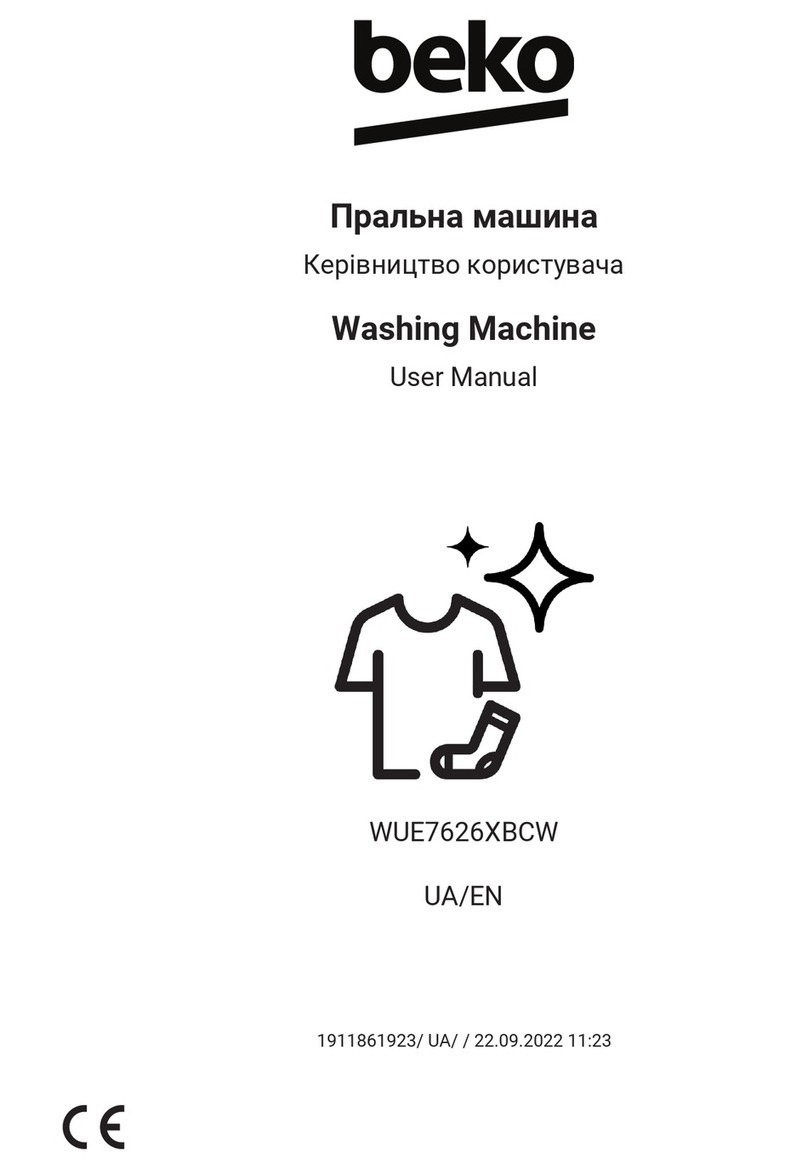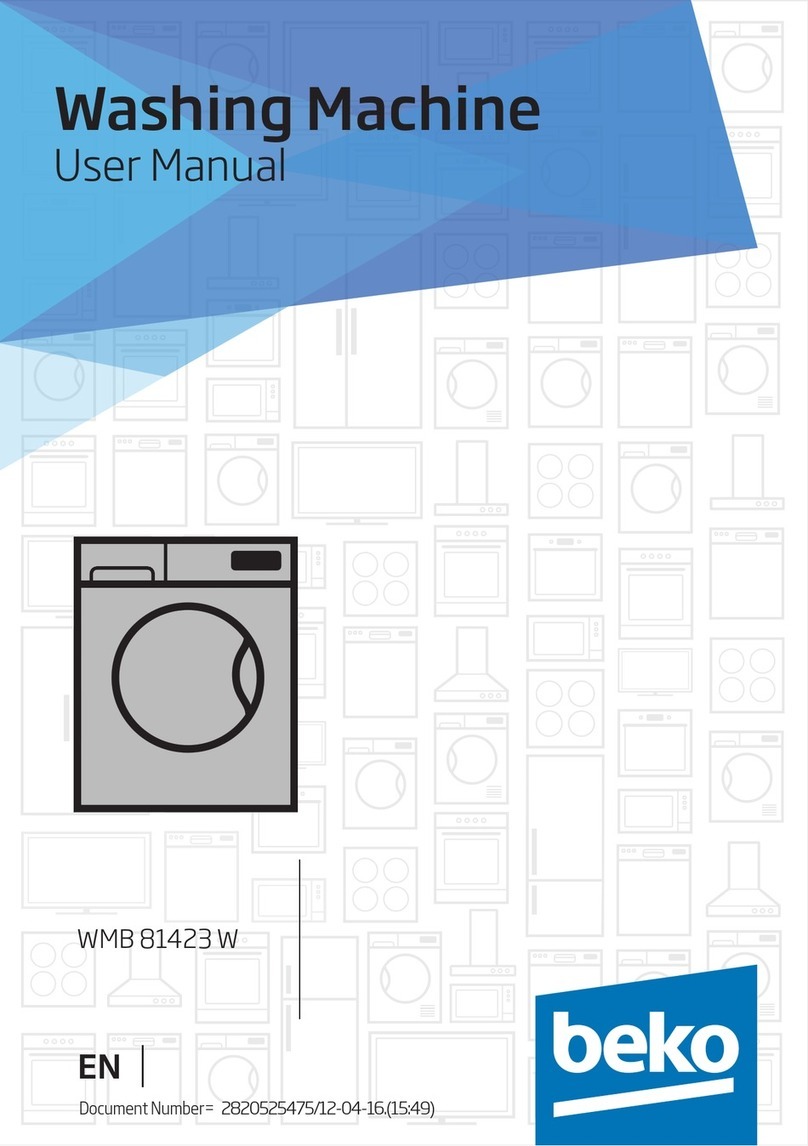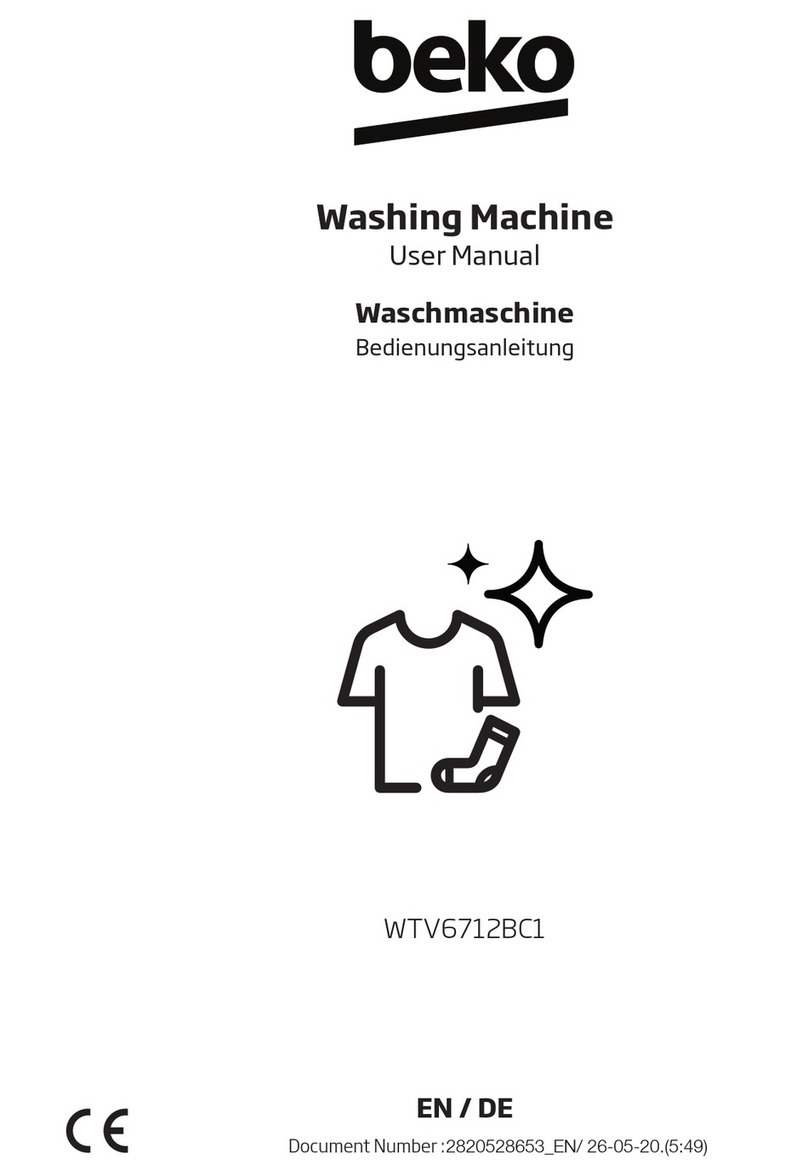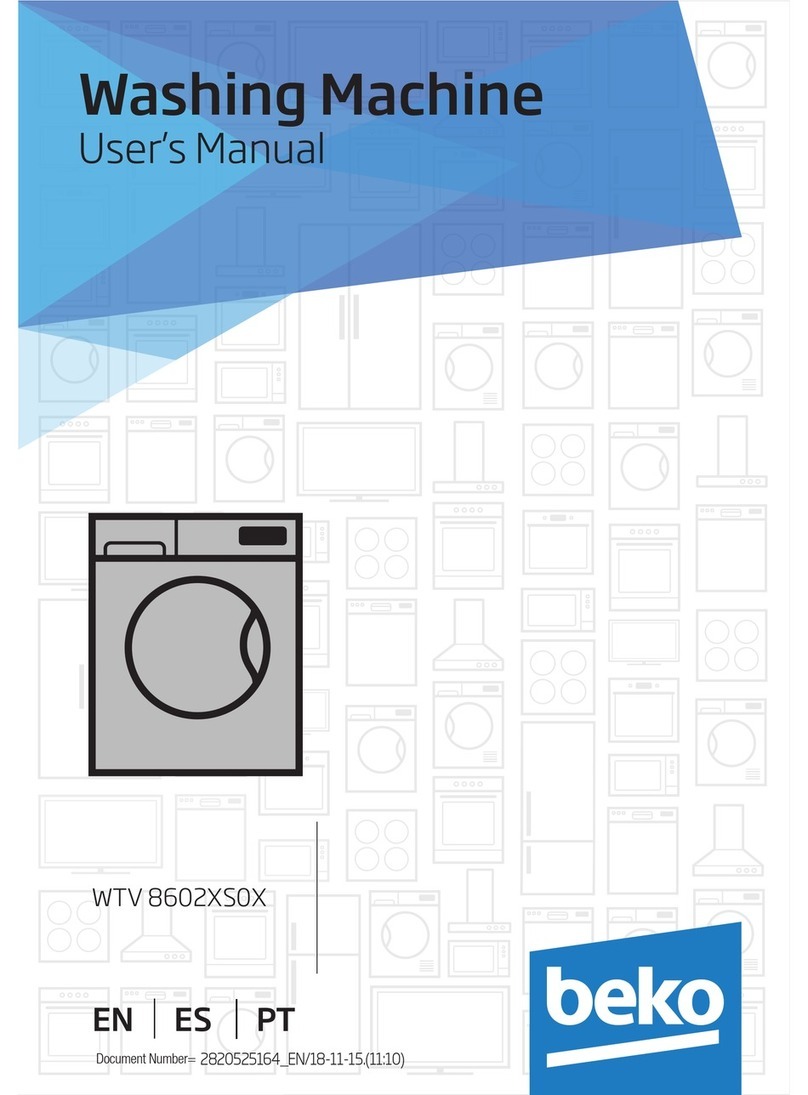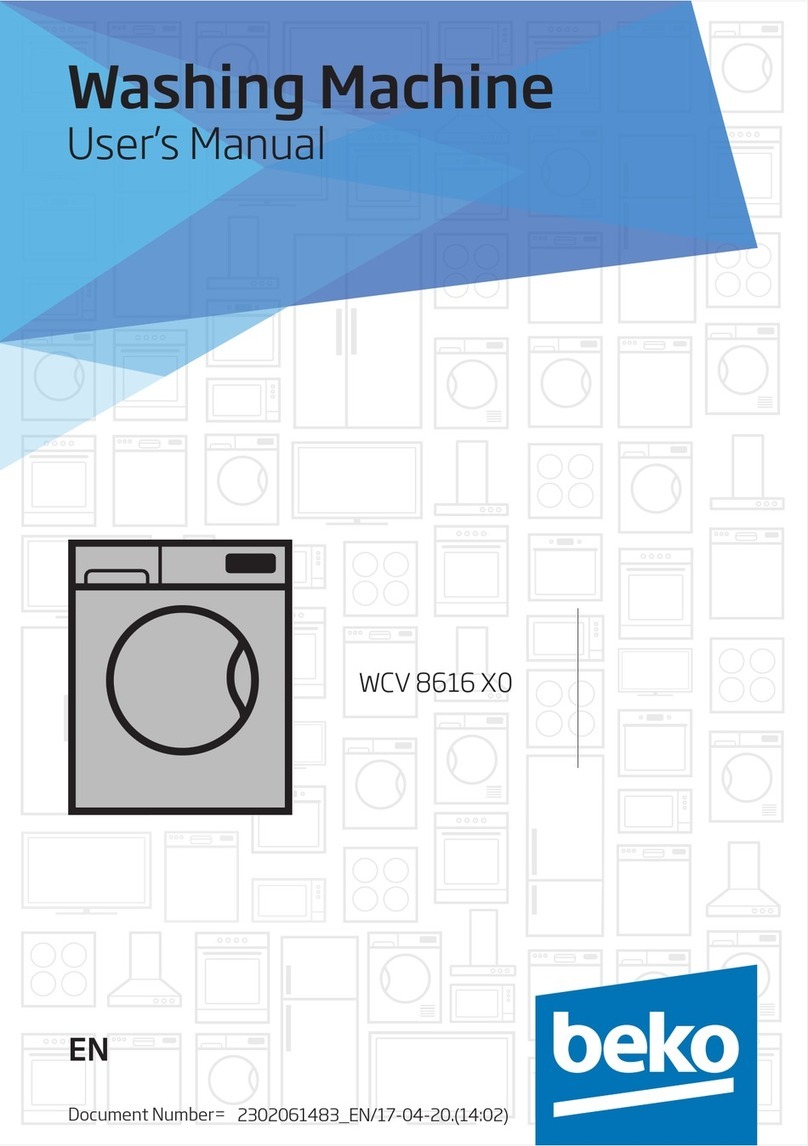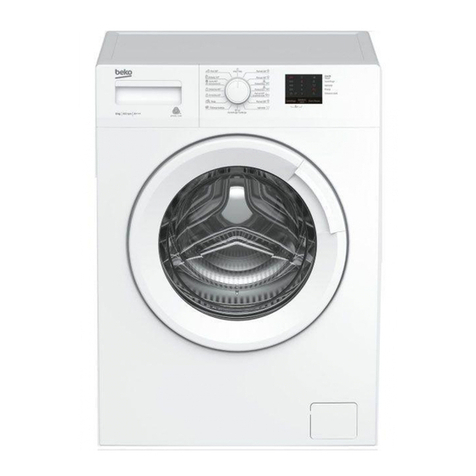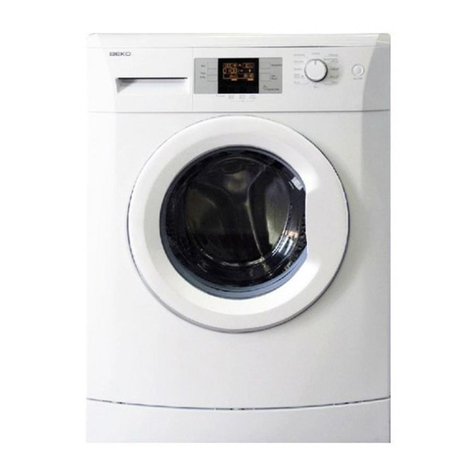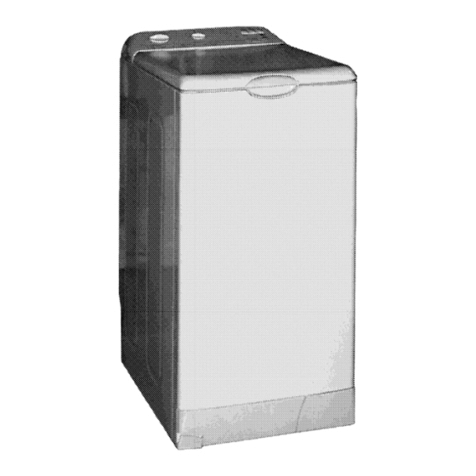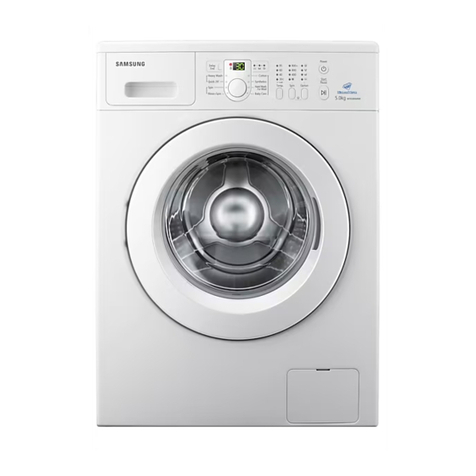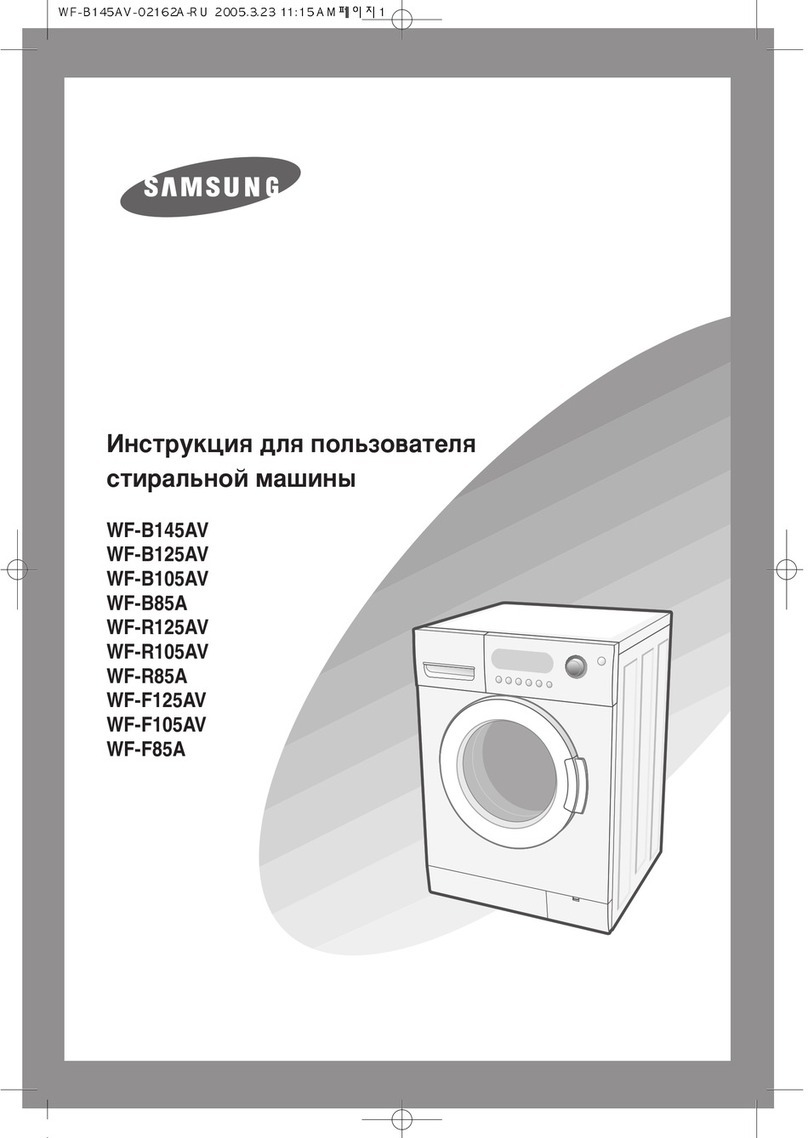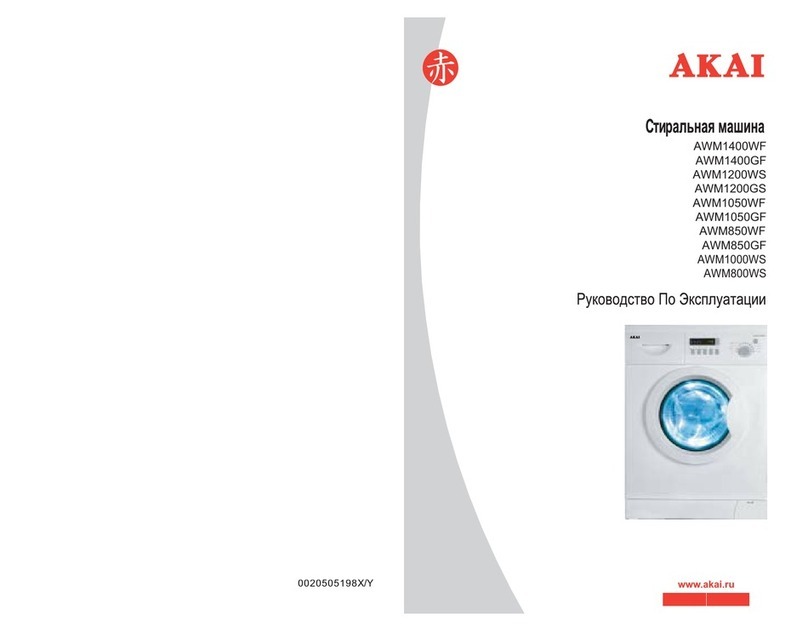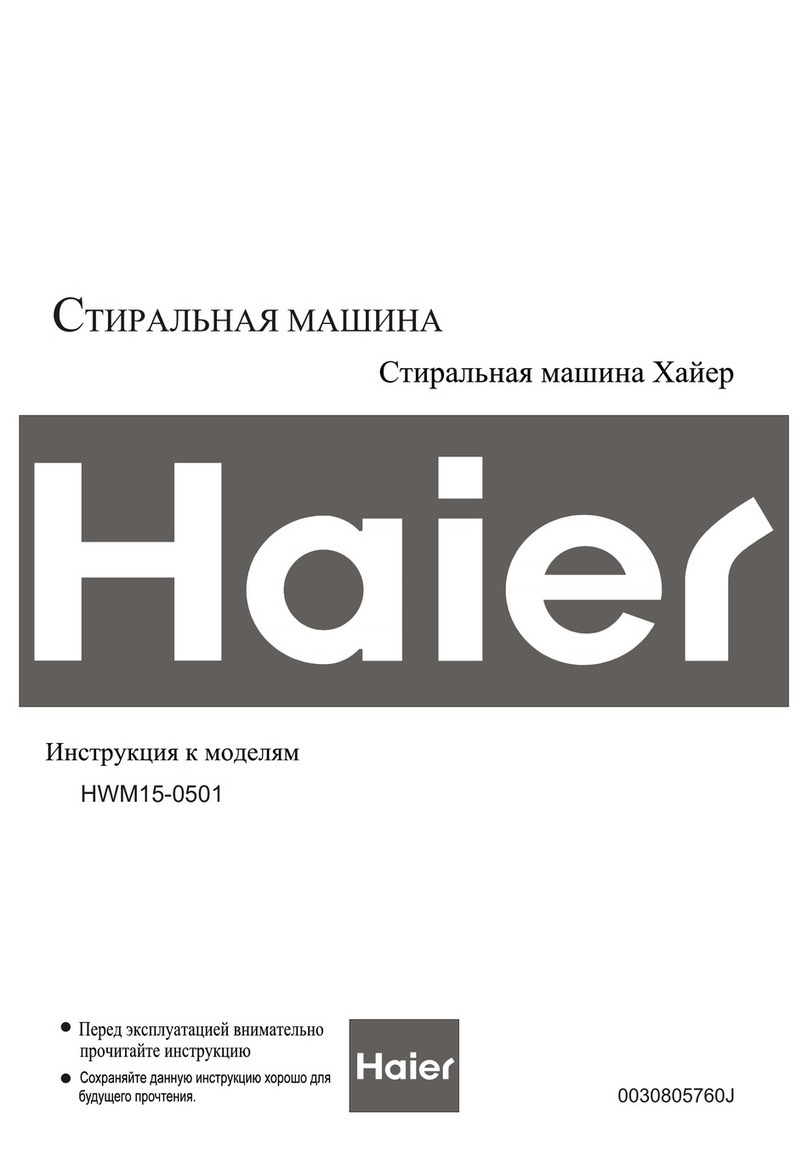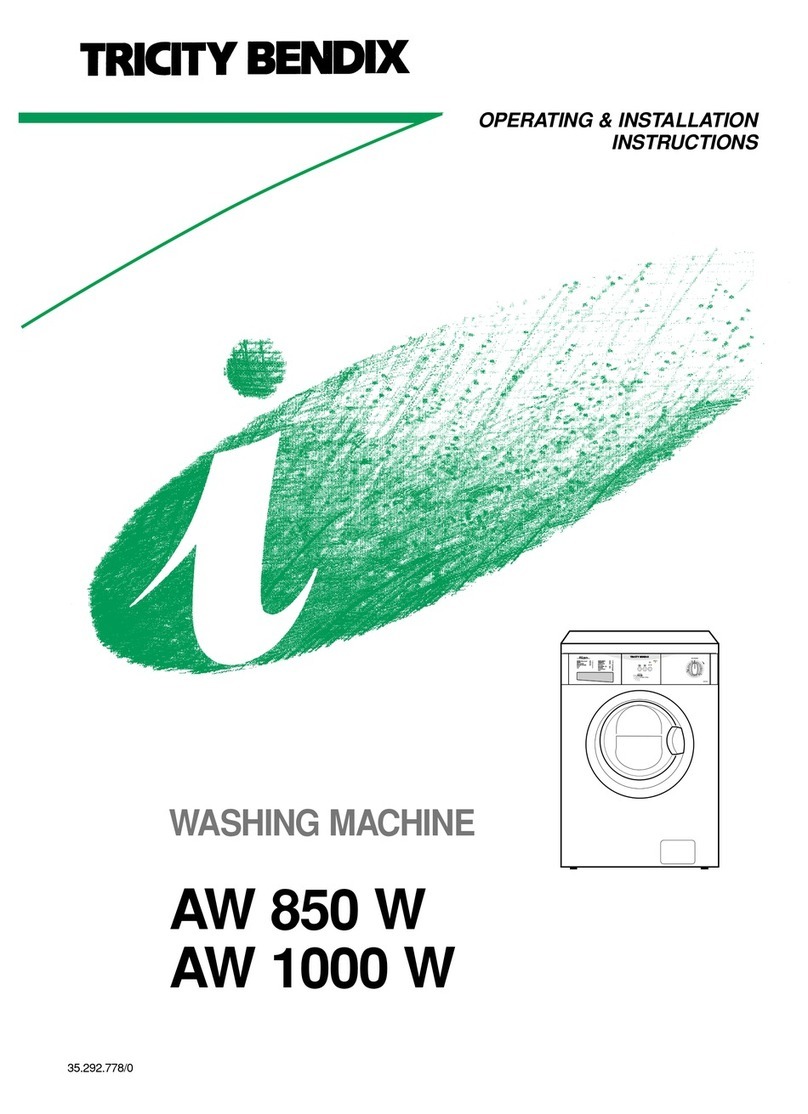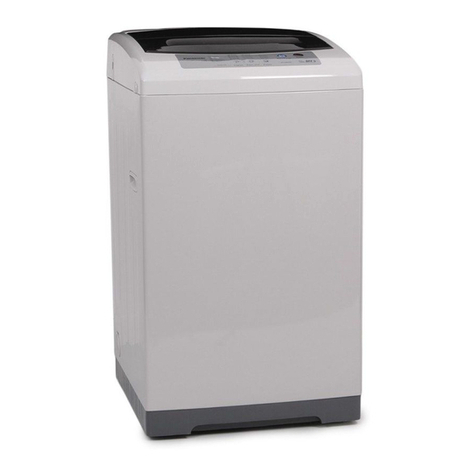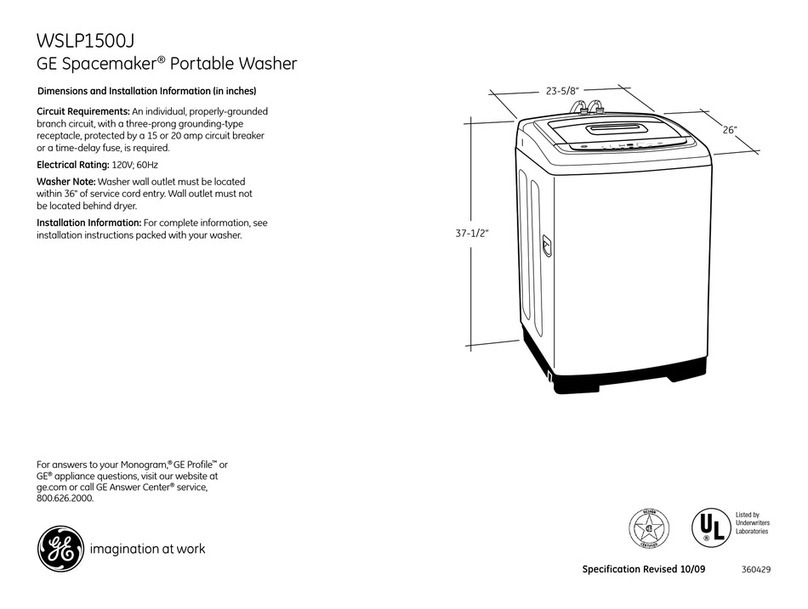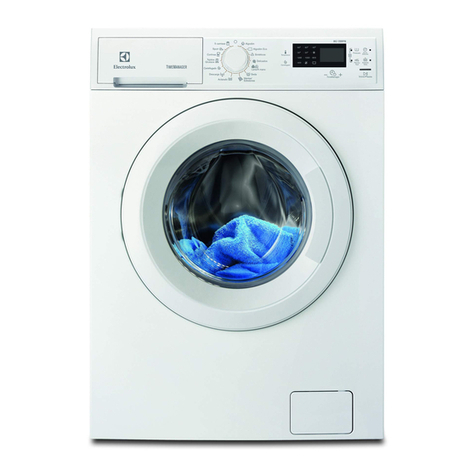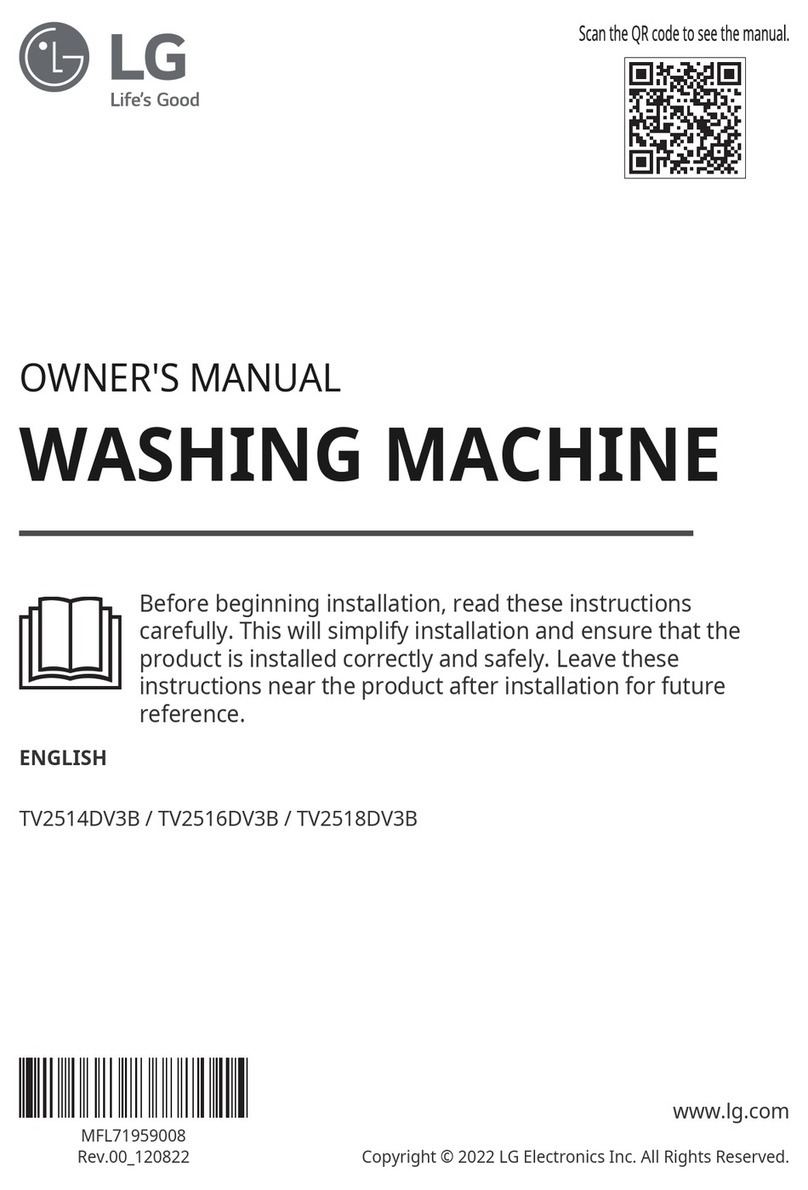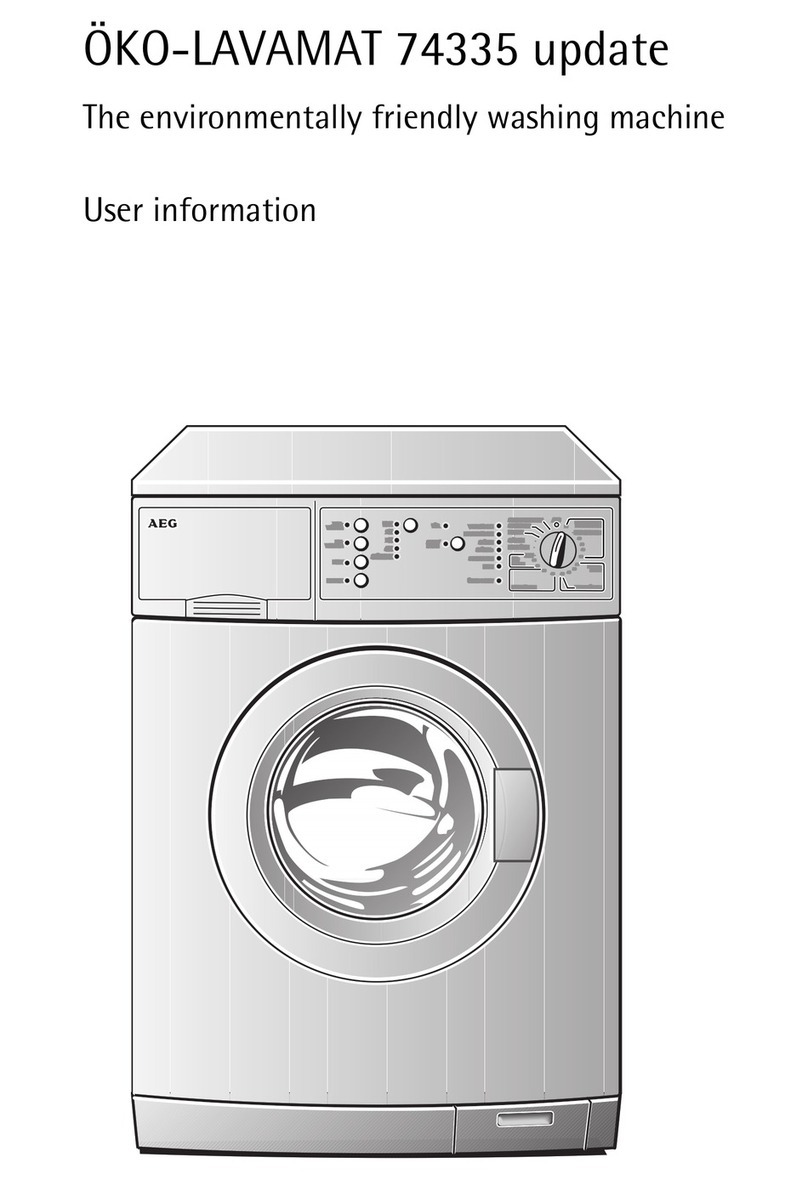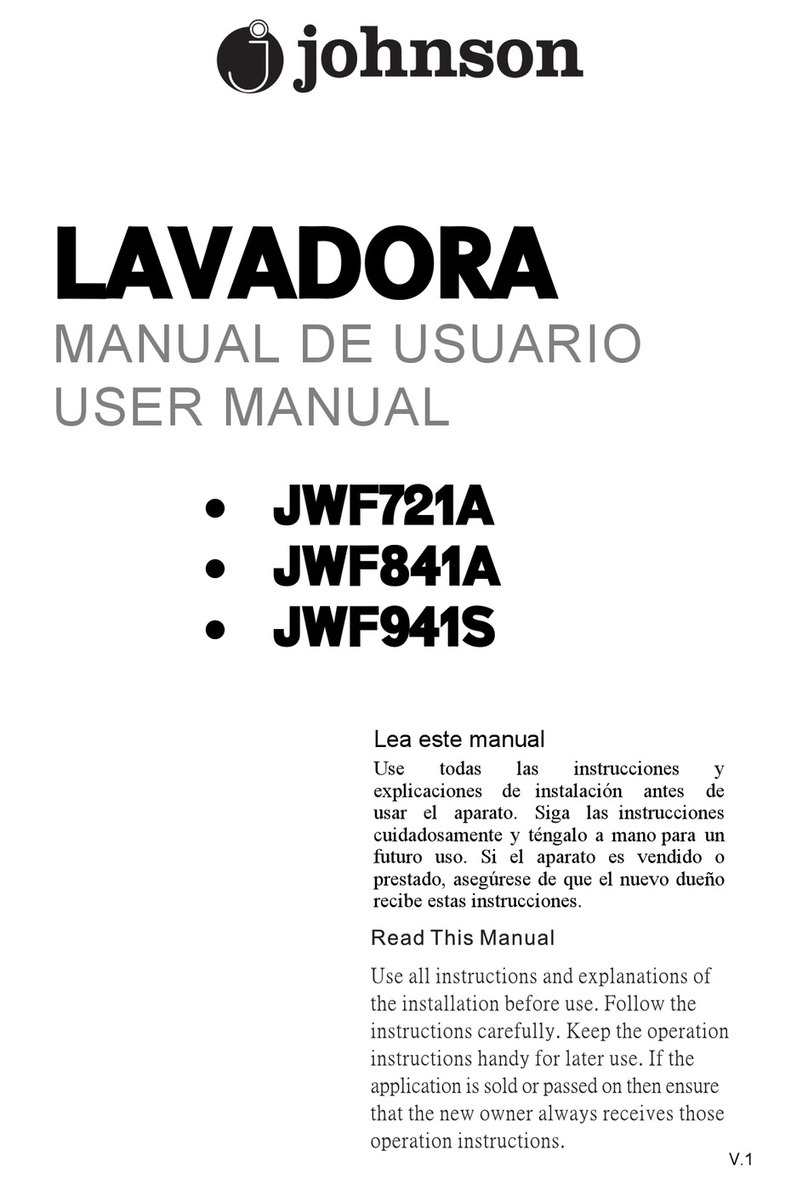
/ EN Washing Machine / User’s Manual
3 Preparation
3.1 Sorting the laundry
degree of soiling and allowable water temperature.
tags.
3.2 Preparing laundry for washing
underwired bras, belt buckles or metal buttons will
damage the machine. Remove the metal pieces or
wash the clothes by putting them in a laundry bag or
pillow case.
pens and paper clips, and turn pockets inside out
and brush. Such objects may damage the product or
cause noise problem.
nylon stockings in a laundry bag or pillow case.
Remove curtain attachment items.
and tears.
labeled products only with an appropriate
programme.
coloured cottons release a lot of dye. Wash them
separately.
removers suitable for machine wash. Always follow
the instructions on the package.
out.
freezer for a few hours before washing. This will
reduce pilling.
flour, lime dust, milk powder, etc. intensely must be
shaken off before placing into the machine. Such
dusts and powders on the laundry may build up on
the inner parts of the machine in time and can cause
damage.
3.3 Things to be done for energy saving
Following information will help you use the product in
an ecological and energy-efficient manner.
by the programme you have selected, but do not
packaging.
soiled laundry.
laundry that is not heavily soiled or stained.
highest spin speed recommended during washing
process.
recommended on the detergent package.
3.4 Initial use
Before starting to use the product, make sure that
all preparations are made in accordance with the
To prepare the product for washing laundry, perform
your product is not equipped with Drum Cleaning
user manual.
C
NOTE :
Use an anti-limescale suitable for the
washing machines.
NOTE :
Some water might have remained in the
product due to the quality control processes in the
3.5 Correct load capacity
The maximum load capacity depends on the type
of laundry, the degree of soiling and the washing
programme desired.
The machine automatically adjusts the amount of
water according to the weight of the loaded laundry.
A
CAUTION:
Follow the information in the
overloaded, machine's washing performance will
drop. Moreover, noise and vibration problems may
occur.
3.6 Loading the laundry
locking sound. Ensure that no items are caught in
the door.
C
NOTE :
The loading door is locked while a
programme is running. The door can only be opened
a while after the programme comes to an end.
A
CAUTION:
and vibration problems may occur in the machine.
3.7 Using detergent and softener
C
NOTE :
When using detergent, softener, starch,
fabric dye, bleach or limescale remover read the
manufacturer's instructions on the package
carefully and follow the suggested dosage values.
Use measuring cup if available.
Detergent Drawer
The detergent drawer is composed of three
compartments:
– (1) for prewash
– (2) for main wash
– (3) for softener
– (*) in addition, there is siphon piece in the softener
compartment.


